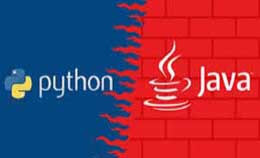Pandas dataframe groupby | Pandas groupby tutorial
Pandas dataframe groupby : The groupby() functionality is essential and will split the data into different group depending on your choice. The group by operation will involve the operation as, Splitting the object, Applying a function and Combining the result. The group operation will involve the combination of splitting the object, applying function and combining the result.
This is used to group large amount of the data and compute operation on groups.
The groupby() return the groupby object and describe how row of original data set is split.
The groupby object will group variable dictionary whose keys are unique and corresponding values.
The data analysis is efficient as computing aggregations as sum (), mean (), median (), min () and max ().
In this single number give nature of potential for large dataset.
In pandas the operations are based on the concept of the groupby.
Parameters of the pandas dataframe groupby are as follows
- Axis: int, default 0 this means that split among the rows (0) and column (1).
- By: mapping, function, sting, or iterable is done here. It is used to determine group for groupby.
- Returns: GroupBy object contains the information of the group.
- group_keys : When calling apply, add group keys to index to identify pieces
- level : If the axis is a MultiIndex , group by a particular level or levels
- as_index: For the aggregated output return object with group labels is as index. Only relevant for DataFrame input. as index=False is effectively “SQL-style” grouped output
- Sort: Sort group keys will get better performance by turning off. This does not influence the order of observations within each group. Groupby will preserve the order of rows within each group.
- Squeeze: It will reduce the dimensionality of the return type if possible, otherwise return a consistent type.
The group by operation will involve the operation as
- Splitting the object.
- Applying a function.
- Combining the result.
Sometimes we split the data into the sets by applying the functionality as subset that time we perform some operations as follows,
- Aggregation: - It means that the summary statics.
- Transformation: - It will perform the group of specific function.
- Filtration: - The discarding of data is with some condition.
The use of large data is efficient and the functions like sum (), mean (), max (), median () are there.
We will get explore aggregations in pandas for simple operations on array and all are based on groupby().
The groupby() functionality is essential and will split the data into different group depending on your choice.
Pandas groupby Example :-
The grouby function will also return the groupby() object which will describe the original data set.#group data on team value
gk=df.groupby(‘Team’)
#let us print first entries
gk.first()
Output:-
























